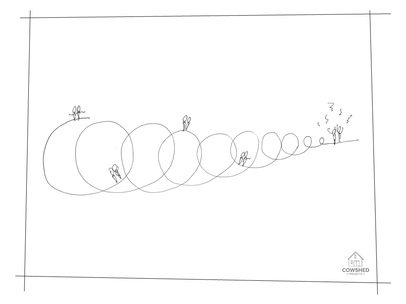|
CS Projects - Making your project management and projects better
Managing the design process is an overlooked art, you are managing a project and creating an idea, or creating a project. There is a reason and an outcome, a start and a finish. But every design is unknown at the start and then, especially in fit out and architecture, there are a multitude of outside influences which makes them more complex, you also have subjectivity to add into the equation. Sometimes there is a design manager involved on larger projects, but that doesn’t mean someone who is managing the project and to involve a dedicated project manager can be a heavy-handed way of developing a design. So, it falls to the designer to effectively manage the project. That is the element that makes or breaks the project, in terms of getting the financial gain and ongoing relationships. The gains in doing it well can soon mount up. If you could spend even 5% less hours on a £20K job through its management, that would be an extra £1,000 in time saved. Time which you could potentially double the value of by using it to work on another project! Manage the process effectively and you are more likely to get a recommendation or repeat work. That would also be a few less speculative pitches. How can you manage a design project well when you don’t have the project management skills? Idea First thing is to understand the process. Design is subjective, kind off, until you start having the constraints of legislation, usability, buildability, cost and sometimes vanity to incorporate. The hardest thing with subjectivity is to get a decision, the even harder thing is to get an agreed subjective decision that works. The quicker you get a decision, the quicker the project and the client gets the value. Also the less time you spend, you get better profits. To manage design efficiently, get those series of thoughts and ideas into a defined outcome as quickly as possible. Or all of those thought and decision loops into a flat line and deliver the idea quickly! Synopsis How do you then manage a design project effectively? There are a couple of ways to approach it. You could accept that you don’t know how many hours it will take to get an answer, charge a contingency. That way though everyone misses out on all the benefits and not achieve the most effective and efficient project possible. To achieve that you could focus on a few simple things. Solution The design process is an agile process. That is you are flexible and try and get a series of small decisions agreed until they mount up to make the full picture. The full benefit of this is that even if parts aren’t agreed there are elements that can be progressed. I always see design as a series of ever decreasing circles or loops, that eventually flatten out to a finished item, either through decision or necessity. To get these circles to flatten in the best way, focus on making the circles increasingly smaller, treat the design as a series of shorter projects that combine to make the whole project, the aim is to get some value for the client at the end of each loop. To help do this focus on the following in this order. You probably do this unconsciously, but to do it consciously is important in being effective and importantly make sure the whole project team knows what’s needed. This will limit communication and information fog and get decisions and solution quicker: 1.Why Why does the client want to do the project, what do they want to get from it? 2.Priorities Then find out what are the most important elements? Where is the value to the client? Where is the value to the contractor in getting decisions early? 3.Complexity What are going to be the difficult bits, especially when you add in legislation, usability, buildability, cost and vanity. These are the risks, these are the elements to monitor closely. Once you have this information, communicate it, then move onto the executing: 1.Organise Decide what you need to do and who’ doing it. 2.Communication Understand and decide who responsible for communicating with who and how. Make sure everyone knows! Clients, employees whoever is part of the project. 3.Information What information have you got, what do you need. Use the agreed communication plan. 4.Plan Plan at a high level for achieving all this. 5.Do Have fun, let the client have fun but always keep in mind the why, priorities and complexity to retain focus on what needs to be done to stop the project drifting. Make sure all the project team know all of this or you have wasted your time, this is your project, you manage it, or better still lead it. Managing design is all about delivering ideas in a functional way, managing the clients focus and delivering the value the client wants and you can do that! There are substantial benefits in terms of cost and reputation if you can improve how you run projects. Don’t miss out! I'd love to hear your views, experiences and comments and if you're interested in finding out more, drop me a line.
Thanks for reading Simon CS Projects - Making your project management and projects better
0 Comments
Leave a Reply. |
AuthorHi I'm Simon. I've worked in projects for a while now, either management or design. I love projects but they're frustrating. Hope some of this help you. Archives
October 2023
Categories |


 RSS Feed
RSS Feed